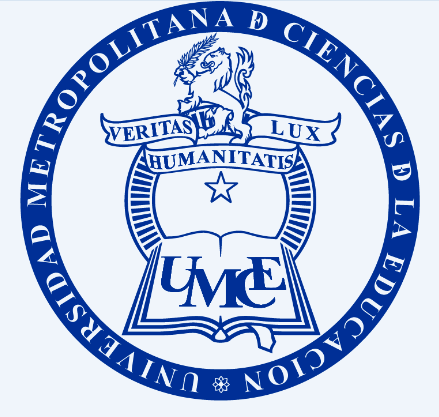Main Article Content
Oct 19, 2022
Abstract
Social attitudes toward people suffering from disabilities have evolved over time from absolute rejection to the current requirement of full integration. In the decade of the sixties, there was a broad rejection of special education schools, which gradually changing its course, from a clinical approach and welfare, to one of education.
In our country a decade ago are being carried out activities aimed at social and educational integration of people experiencing disability. It has been determined that the human being is constituted as such in interaction with others and requires an acceptance in the community to achieve significant leaming and integration of disabled children at regular physical education pays dividends for them and for their environment.
With the completion o f the “First National Study on Disability” is achieved characterize the different areas of participation in society of these people, revealing
the difficulties in school terms, with problems related to low enrollment, dropout, among others.
Within the prevailing curriculum framework, the development of pupils at some physical disability means a great effort, both for him and for teachers and the rest of their peers. But an educational community with an open mind and a real acceptance of diversity, can solve many of the difficulties. The difficulties faced by the integrated students relate to accessibility, performance in activities of daily living, autonomy during lessons, requiring mediation in certain leaming.
Often integrated students require direct and indirect support performed by professional specialists, enable further the process of integration into the
classroom.
Another important factor in the success of the process, is related to the full and active support of families.
The greatest difficulties are related to environmental barriere, both attitudinal as procedures or methodologies used, and not related in any way exclusively with difficulties highlighted by the people experiencing disability.
The methodological strategies used in regular schools if they are designed and implemented at all times considering the integrated students constitute a facilitator With respect to the elements that facilítate the process, referred to regular classroom teachere were highly committed, in addition to the families involved and sympathetic, rather inviting about the requirements encountered in the classroom, with support specialists, the which may make the guidelines and accompanying due process.
Disability can not continué watching something happens to one person, but such influence is the environment in the educational process, that by
providing a favorable environment, it successfully manages to keep the process ofeducational integration.
References
Bowen James, Teorías de la educación, México, Limusa, 1996. 452 p.
Buendía Eximan Leonor, [et al], Métodos de Investigación en Psicopedagogía, Madrid, Me Graw Hill, 1998. 343 p.
D.Vlachou Anastasia, Caminos hacia una educación inclusiva, La Muralla, 1999, 262 p. Documento extractado de Enciclopedia Práctica de Pedagogía Tomo VI Editorial Planeta, Barcelona España 1986.
Fermoso Estébanez Paciano, Pedagogía Social: Fundamentación científica, Barcelona, Header. 1994. 409 p.
García-Huidobro, [et al], La reforma Educacional chilena, Madrid, Popular, 1999. 335 p.
Gobierno de Chile, FONADIS, Primer Estudio Nacional de la Discapacidad en Chile: ENDISCCIF, 2004. 89 p.
Gobierno de Chile, FONADIS, Texto de apoyo para un proceso de integración educativa, 2001
Gobierno de Chile, MINEDUC, Estudio a nivel muestral de la calidad del proceso de integración educativa. Resumen ejecutivo, 2004.42 p.
Hernández Sampieri Roberto, [et al], Metodología de la Investigación, México, Me Graw Hill, 2a ed. 1992. 501 p.
Tenorio Eitel Solange, [et al], Revista digital UMBRAL 2000_N 16_Septiembre 2004, Integración escolar y su efectividad en la educación chilena.
Manosalva Mena Sergio, Integración Educacional de alumnos en situación de discapacidad: Material complementario. Santiago de Chile, Centro de Estudios, Capacitación Laboral y Perfeccionamiento Docente, 1997. 97 p.
Meneghello Julio, Compendio de Pediatría, Panamericana, 5a ed. T.2, 1997
Padua Jorge, Técnicas de investigación aplicadas a las Ciencias Sociales, México, Fondo de Cultura Económica de México, 1979. 360 p.
Parálisis cerebral: Publication de National Dissemination Center for Children with Disabilities (N1CHCY).
Sabino Carlos, Como hacer una Tesis, Caracas, Panapo,1994, 240 p.
Schunk Dale H„ Teorías del aprendizaje, México, Prentice Hall Hispanoamericana, 2a ed. 1999. 512 p.
Sjoberg Gideon, (y otros), Metodología de la Investigación social, México, Trillas, 1980. 418 p.
Schmelkes Sylvia, Hacia una mejor calidad de nuestras escuelas, INTERAMER 32, serie educativa OEA.
Stainback Susan y William, Aulas Inclusivas: Un nuevo modo de enfocar y vivir el currículo, Madrid, Narcea, 2a ed. 2001. 295 p.
Universidad Central de Valencia,Trabajo de Investigación, tercer ciclo doctorado curso 2004-2005 tecnología educación y discapacidad. Caracterización de los estudiantes en situación de discapacidad. Caso Universidad Central de Venezuela Maignon Sambrano Rosalba, Septiembre 2005.
OEA Taller Subregional sobre políticas públicas para la inclusión educativa y social de la niñez con capacidades diferentes (MERCOSUR, Bolivia y Chile) Programa de Promoción Integral de los Derechos del niño. PRODER, Montevideo, 2002 Instituto Interamericano del Niño, Bodden Mayorga, Gladys, Modelo de integración de la enseñanza general básica. San José, 1993. P. 103-107.




